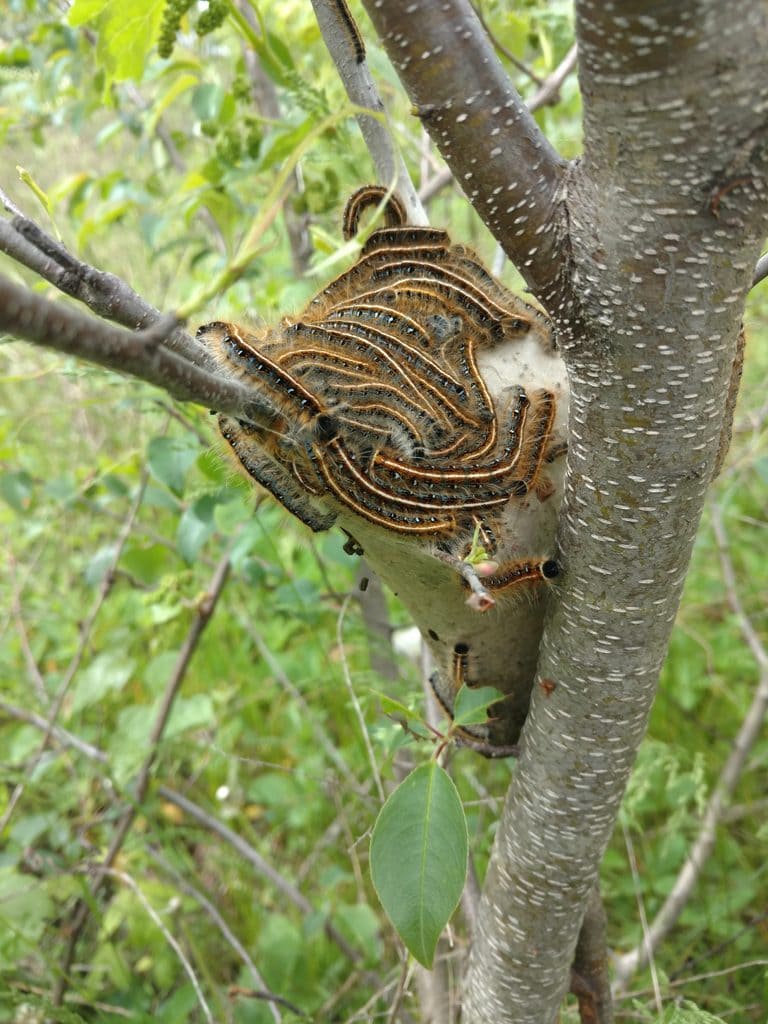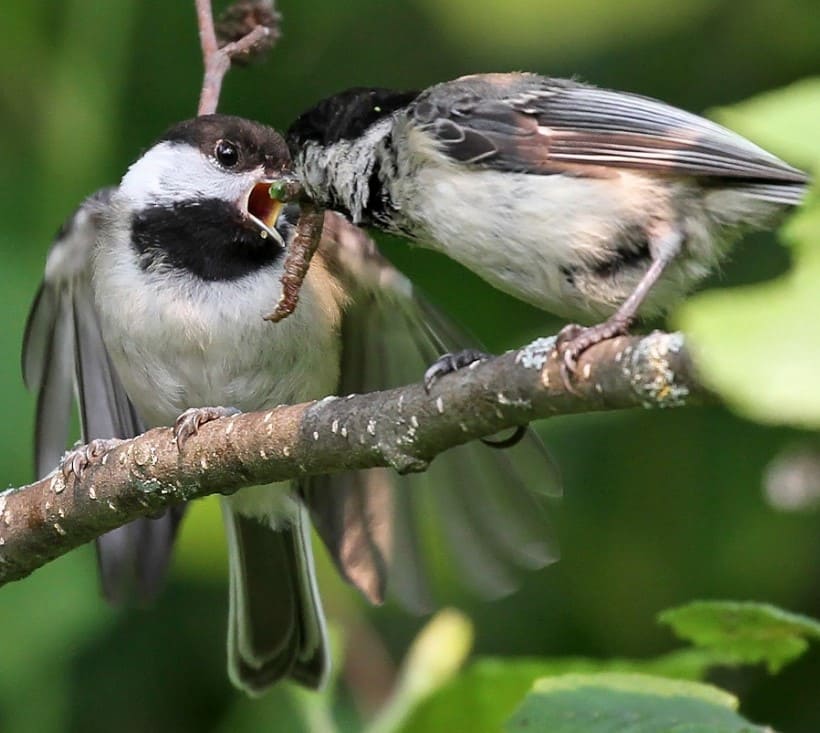There’s nothing more disheartening than watching your once-thriving garden suddenly turn into a buffet for hungry caterpillars. One day your kale is lush and vibrant, and the next, it’s full of holes with frass littered beneath.
If you’ve ever had that sinking feeling while turning over leaves, you’re not alone and you’re not powerless either.
The good news is that you don’t need harsh chemicals to fight back. Caterpillars can be stubborn, but with the right natural tools and a little consistency, you can protect your plants and restore balance to your garden.
Understanding the Caterpillar Problem
Caterpillars are the larval stage of moths and butterflies. While some are harmless or even desirable (like monarchs), many others can devastate leaves, fruit, and flowers in a matter of days.
Armyworms, cabbage loopers, tomato hornworms, and tent caterpillars are among the most common culprits.

They often arrive in early spring, when adult insects begin laying eggs on the undersides of leaves or in bark crevices. Once hatched, the larvae start feeding, and if you don’t catch them early, they can multiply fast.
Recognizing the signs like chewed holes, curled leaves, droppings, or silk webs is your first line of defense. The earlier you spot them, the easier they are to manage.
6 Natural Ways to Keep Caterpillars Out of Garden
1. Physical Barriers That Actually Work
One of the most effective things you can do is physically block caterpillars from reaching your plants. Using lightweight row covers over vulnerable crops like cabbage, broccoli, and kale prevents moths and butterflies from laying eggs on the leaves.
It’s a simple step that pays off fast, especially if you secure the edges and remove covers only when pollinators need access.

If you’re dealing with tree-loving caterpillars like tent worms or gypsy moth larvae, consider wrapping trunks with a layer of insulation or fibrous material, secured with duct tape. For extra protection, some gardeners apply a thin ring of vegetable shortening or sticky gel just beneath the wrap.
The caterpillars either stop in their tracks or refuse to cross. It sounds simple and it is but you’ll be amazed how effective this barrier can be.
2. Encouraging Natural Predators
Your garden is part of a much bigger ecosystem, and some of your best allies in caterpillar control already live there.
Birds like chickadees, wrens, and robins feed heavily on caterpillars, especially during nesting season. They’ll patrol your plants daily if you make your space bird-friendly with a shallow water source and nearby shrubs for shelter.

Beneficial insects also do their part. Parasitic wasps lay eggs inside caterpillars, ladybugs eat their eggs, and lacewing larvae are like little green vacuum cleaners.
You can attract these helpers by planting nectar-rich flowers like dill, fennel, and alyssum, and by avoiding broad-spectrum pesticides that might harm them.
The more welcoming your garden is to these natural pest controllers, the fewer problems you’ll face.
3. Companion Planting and Trap Crops

Certain herbs and flowers can help confuse or deter caterpillar-causing insects. Strongly scented plants like thyme, sage, and garlic seem to discourage adult moths from laying eggs. Interplanting them among your vegetables adds fragrance, beauty, and protection all in one go.
Nasturtiums work beautifully as a trap crop. Caterpillars often choose them over your more valuable greens, giving you time to intervene before the damage spreads.
You can also plant mustard as a decoy near cabbage or kale, just be prepared to sacrifice the trap crop if the pests take the bait.
The key here is creating diversity. A well-balanced garden filled with a mix of scents, textures, and plant families makes it harder for pests to find what they’re looking for.
4. Homemade Natural Sprays That Work
When you need to take direct action, you still don’t need chemicals. There are safe, homemade sprays that discourage feeding and disrupt the caterpillar life cycle.
Neem oil, made from the neem tree, is one of the most trusted organic treatments. It works by interrupting caterpillars’ growth and feeding behavior.

Garlic and chili sprays are also great deterrents, just blend garlic, chili, and water, strain the mixture, and spray it on your leaves. It won’t harm the plant, but most pests can’t stand the taste or smell.
Additionally, soap sprays made from mild dish soap and water can help against soft-bodied pests. Just be sure to test a small patch of the plant first and spray in the early morning or evening to avoid sun damage.
These natural treatments are most effective when applied regularly and at the first sign of trouble.
See more: The Ultimate DIY Garlic Alcohol Spray for Garden Pests
5. Using Bacillus thuringiensis (Bt) Responsibly
If you’re facing a larger infestation, you might turn to Bt, a naturally occurring soil bacterium that’s often used in organic gardening. It specifically targets caterpillars by stopping their digestion, and it’s safe for humans, pets, and pollinators when used correctly.

Bt is best used on young caterpillars, right after they hatch. It works best when sprayed in the early evening, when the larvae are feeding.
Be sure to reapply after heavy rain. While it’s powerful, it doesn’t harm beneficial insects or birds and that’s why it’s often a go-to for organic growers.
It won’t provide instant results, but within a few days, you’ll start to see a decline in damage as the caterpillars stop eating.
6. Hand-Picking and Egg Removal

It might not be glamorous, but there’s no denying the effectiveness of simply picking caterpillars off your plants. Early morning or late evening is the best time to find them, when they’re actively feeding or resting under leaves. Drop them into a bucket of soapy water and they’re gone for good.
Don’t forget to check for eggs as well. Moth and butterfly eggs are often laid in neat clusters underneath leaves. Gently scrape them off or snip the leaf tips if necessary.
If you can break the cycle at the egg stage, you’ll prevent dozens of new caterpillars from hatching and feeding.
How to Prevent Future Infestations
Once you’ve cleared the current caterpillar issue, keeping them from returning is your next step. Rotate your crops from season to season to avoid building up pests in the same soil. Clean up any leaf litter or plant debris at the end of the season so overwintering pests don’t have a cozy hiding place.
Mulching is helpful but keep an eye out as some caterpillars pupate in the soil or under mulch layers. Shake out new seedlings and inspect transplants before adding them to the garden. A little prevention now means fewer problems later.
And one final tip: keep your plants healthy and well-fed. Stressed, thirsty plants attract pests faster than you think. A vigorous plant can recover from a nibble, but a weak one might not bounce back.
FAQs
Are all caterpillars harmful to the garden?
No, some are part of the natural balance, and others become beautiful pollinators like butterflies. The trouble starts when certain species multiply quickly and strip plants bare.
It’s okay to let a few be, but keep an eye on numbers. A sudden surge usually means intervention is needed.
Do caterpillars come back every year?
They can. Many moth and butterfly species lay eggs in fall or early spring, and the larvae hatch when the weather warms up. Cleaning up garden debris, rotating crops, and removing egg clusters helps reduce repeat infestations.
Can I leave a few caterpillars in the garden?
Yes, especially if they belong to native or beneficial species. A few chewed leaves won’t hurt most plants, and feeding birds or wasps need them, too.
The goal isn’t to eliminate every single one, it’s to prevent a full-blown invasion.
Will natural sprays like garlic or chili harm my plants?
Not usually, but always test a small section first. Some tender greens or young seedlings might be more sensitive.
You should spray early in the morning or after sunset to avoid sun damage, and reapply after heavy rain for best results.

